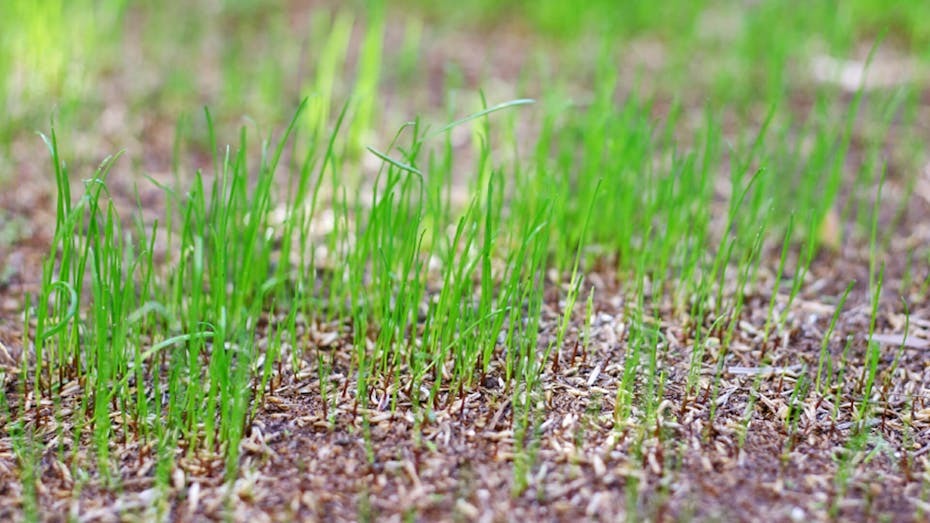
How to Repair with Grass Seed
You need three things when you use seed to repair your lawn; good seed to soil contact, even distribution of seed and finally constant moisture
Apart from warmth you need three things when seeding a lawn:
- Good seed to soil contact
- Even distribution of seed
- Constant moisture
Good Soil Contact
Start by raking and even shallow spiking (5 to 10mm) the surface to open it up ready for seeding. Next put in the seed and then gently drag the rake over the surface to start mixing the seed with the soil. If you are just patch repairing small areas hand sprinkle about 10 to 20 seeds per square inch. Use a light roller; perhaps a half filled water roller or your lawn mower roller and roll the lawn in two directions. If this isn’t available tread or firm the surface to get good contact.
Adding some STARTER pre-seeding fertiliser or any seasonal fertiliser as the last item will speed growth up once the seed has germinated.
Even Distribution
You can broadcast seed by hand or for larger areas use a fertiliser spreader; the bag seeder in our store is excellent for grass seed. A shutter one third to one half open should do nicely. Professionals will split the seed into two lots and seed in one direction with one lot and reverse the direction for the second lot. This ensures an even distribution. I suggest you do yours in four lots and seed in four different directions.
Constant Moisture
Now all you have to do is stop it drying out. This means light watering with a very fine spray, twice a day at least and more if it is dry. Do this for the first two weeks. Large droplets or heavy watering will move or puddle the seed destroying the even distribution.
The second two weeks should be once a day or every other day. If things start drying out increase the frequency. In month two you can water more heavily and less frequently; perhaps twice a week will do. Finally, water once a week in month three and keep watering if things get dry. New grass is prone to drying in the first six months.
Note: If the ground is very dry when you come to seed it is best to thoroughly soak it several days before seeding to build a reservoir of moisture in the soil.
Mowing
Depending on the seed used and the temperature you should start to see some green shoots within 10 to 14 days, however, existing grass may well be quite long and will shade out seedlings if left. Therefore mow as normal to keep the mature grasses in check. Ensure the grass is dry and the mower freshly sharpened. Go slowly for the first few times you mow so that the grass is cut as cleanly as possible. Also mow on the highest setting possible and as the new grass will be quite tender make big slow or 3 point turns.
Once the grass gets its fourth cut you can start bringing the mowing height down over the next 2 to 3 cuts to the desired height for that time of year. If this height is going to be less than ¾” or 2cm then ensure adequate moisture is available otherwise stay at or above 2cm for the first 6 months.
Using
Different seed establishes at different rates with rye grass being the fastest at about 8 weeks. This means you can start using it then but keep the use light for at least another month or two. Other grasses may take 10 to 12 weeks and will take slightly longer to bring into full normal use.
Weed Control
Quite often you’ll find a right old crop of weeds coming up with your lovely new grass. Many will not survive your first few mowings but some will and need to be controlled. You can dig or even pull individual weeds out quite easily but do press down on the surrounding soil to prevent grass plants coming up as well. Treating the lawn with a weed killer may well be required but not all weed killers are suitable for new lawns so check out the Resolva and Verdone Weed Killer page for safe use.